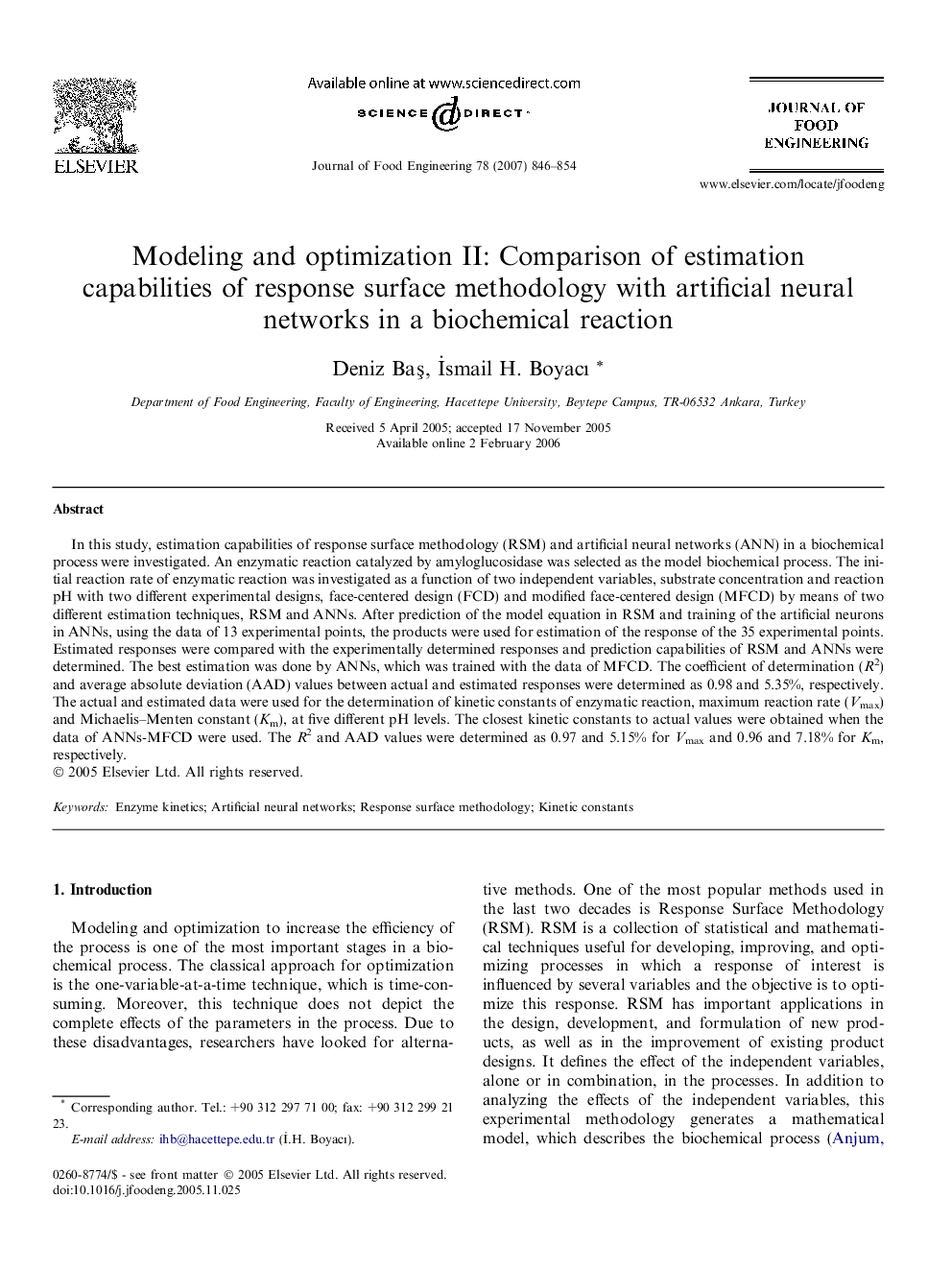| کد مقاله | کد نشریه | سال انتشار | مقاله انگلیسی | نسخه تمام متن |
|---|---|---|---|---|
| 225902 | 464516 | 2007 | 9 صفحه PDF | دانلود رایگان |

In this study, estimation capabilities of response surface methodology (RSM) and artificial neural networks (ANN) in a biochemical process were investigated. An enzymatic reaction catalyzed by amyloglucosidase was selected as the model biochemical process. The initial reaction rate of enzymatic reaction was investigated as a function of two independent variables, substrate concentration and reaction pH with two different experimental designs, face-centered design (FCD) and modified face-centered design (MFCD) by means of two different estimation techniques, RSM and ANNs. After prediction of the model equation in RSM and training of the artificial neurons in ANNs, using the data of 13 experimental points, the products were used for estimation of the response of the 35 experimental points. Estimated responses were compared with the experimentally determined responses and prediction capabilities of RSM and ANNs were determined. The best estimation was done by ANNs, which was trained with the data of MFCD. The coefficient of determination (R2) and average absolute deviation (AAD) values between actual and estimated responses were determined as 0.98 and 5.35%, respectively. The actual and estimated data were used for the determination of kinetic constants of enzymatic reaction, maximum reaction rate (Vmax) and Michaelis–Menten constant (Km), at five different pH levels. The closest kinetic constants to actual values were obtained when the data of ANNs-MFCD were used. The R2 and AAD values were determined as 0.97 and 5.15% for Vmax and 0.96 and 7.18% for Km, respectively.
Journal: Journal of Food Engineering - Volume 78, Issue 3, February 2007, Pages 846–854